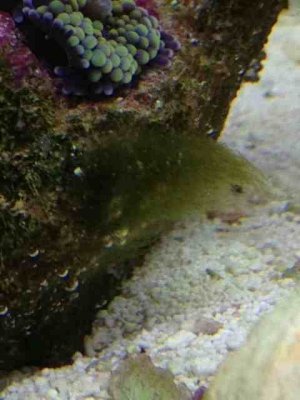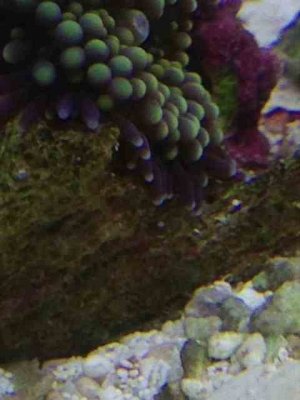Should I use peroxide when other more contemporary methods are available?
I guess if they worked as well as we thought they did nobody would be trying our method. Over the course of this and other threads its been made apparent to me we as reefers tend to use preventative methods as removal methods and that could be a problem. consider GFO
excellent for binding phosphate if you balance it well and not overdo to bleach corals. A given amount binds the free phosphate in solution but existing tufts of algae dont immediately disappear when you hook up the reactor. They could be gaining nutrients via holdfasts, that while non absorbative, are anchoring the plant close enough to rock structure that could be liberating stored phosphates via bacterial action so while the water column remains relatively low in concentration, the plant survices. Then we start upping the dosage based on anyones guess to zap the plant, and you can see how problems abound.
one of the most common anti-use arguments is that its a bandaid that doesnt attack the larger problem, nutrient stores. My response to that is twofold. Initially, we may not be dealing with nutrient sensitive invaders as mentioned below, and secondarily everything we do in our tank is a bandaid. A skimmer is a bandaid, the initial waste loading we fail to dilute is the heart of the problem. GFO can't be bought once and last forever, it has to be carefully balanced and repurchased or regenerated, just like peroxide may need retreatments. Nothing in our care method is one off, its all circular, and in that peroxide is just another difference among treatments.
concerned about peroxide as a caustic? Consider the caustic nature of kalk and what happens when its overdosed. spike your pH out to 9...everything we use from iodide to kalk to peroxide needs to be balanced accordingly. there is no particularly special aspect of peroxide that precludes its use as a tank doser even though thats not really popular, yet

consider invaders who dont respond to nutrients. bryopsis, red brush algae, dinoflagellates, bryozoans (rare but some pics are in here of them) and invasive macro algaes. depending on your list of sensitives and size of the tank, it could be a great solution to simply treat the plant or animal itself directly and not the water column indirectly.
instead of making peroxide a fix all, Im more interested in making sound predictions about where it can simply be tried. if it works as well and as long term as it does in my tank, then you w love it. For some, the grow back is too fast to warrant further use and they move on.
I think our track record here for making sound predictions is reliable. 99% of targets treated will do the initial die, then at that point preventative mechanisms may work their intended purpose better. The most fun aspect of this thread is simply eyeballing some pictures to discern safety in trying, for that I give us 100%
valonia in really large tanks hasn't been a home run with peroxide. when they couldnt remove the rocks for external treatment, it just didnt die all that well for underwater treatments. peroxide also didnt work well on the nasty invader neomeris annulata, it simply either didnt phase it or it grew back too fast. we get the most mileage in treating green hair algae, dinoflagellates, red and purple brush algae, invasive macros, unidentified algae that are invasive etc.
no fish has ever been reported as even stressed from the treatments, so thats nice to know. Im sure some are, we just haven't come across any yet in about three years of doing this.



